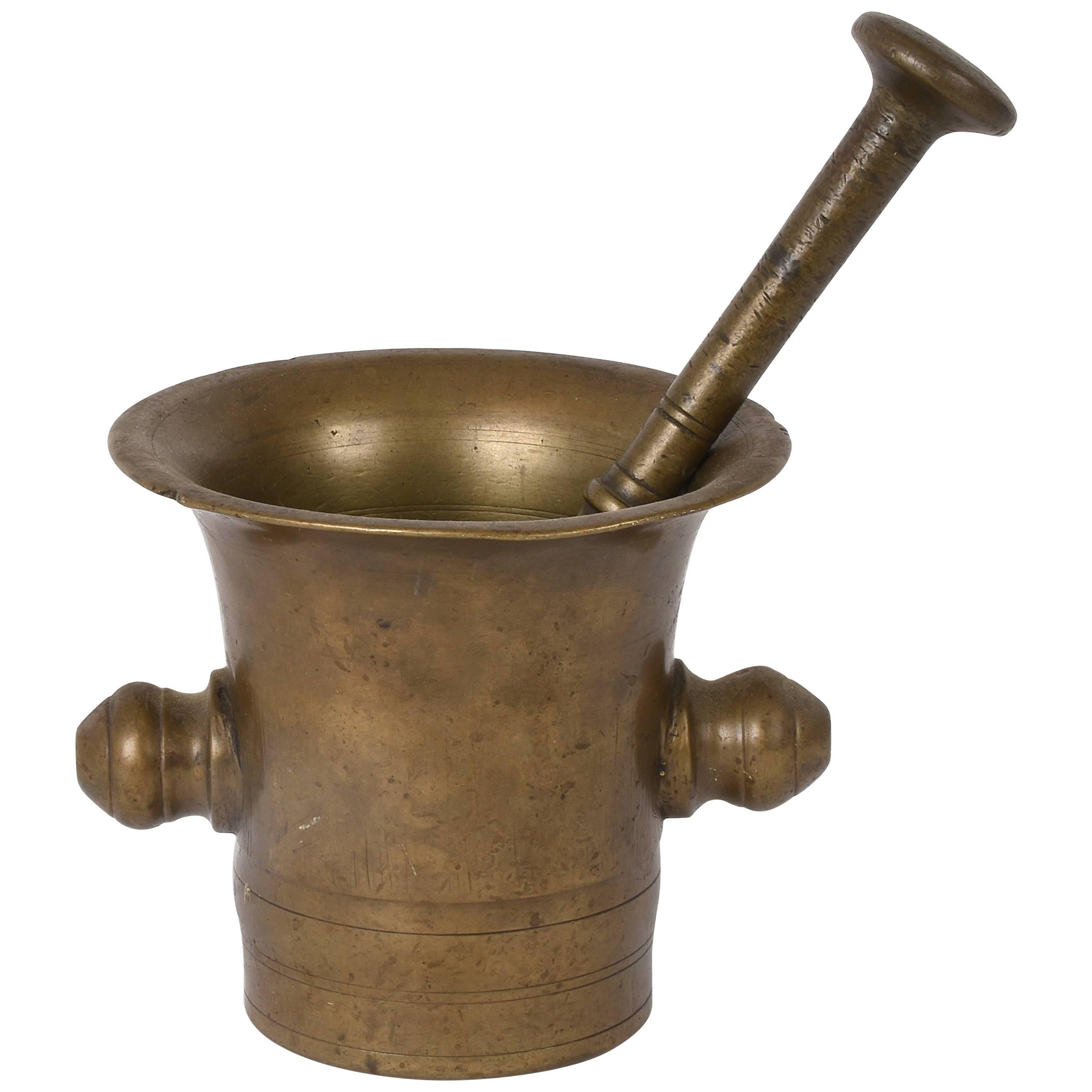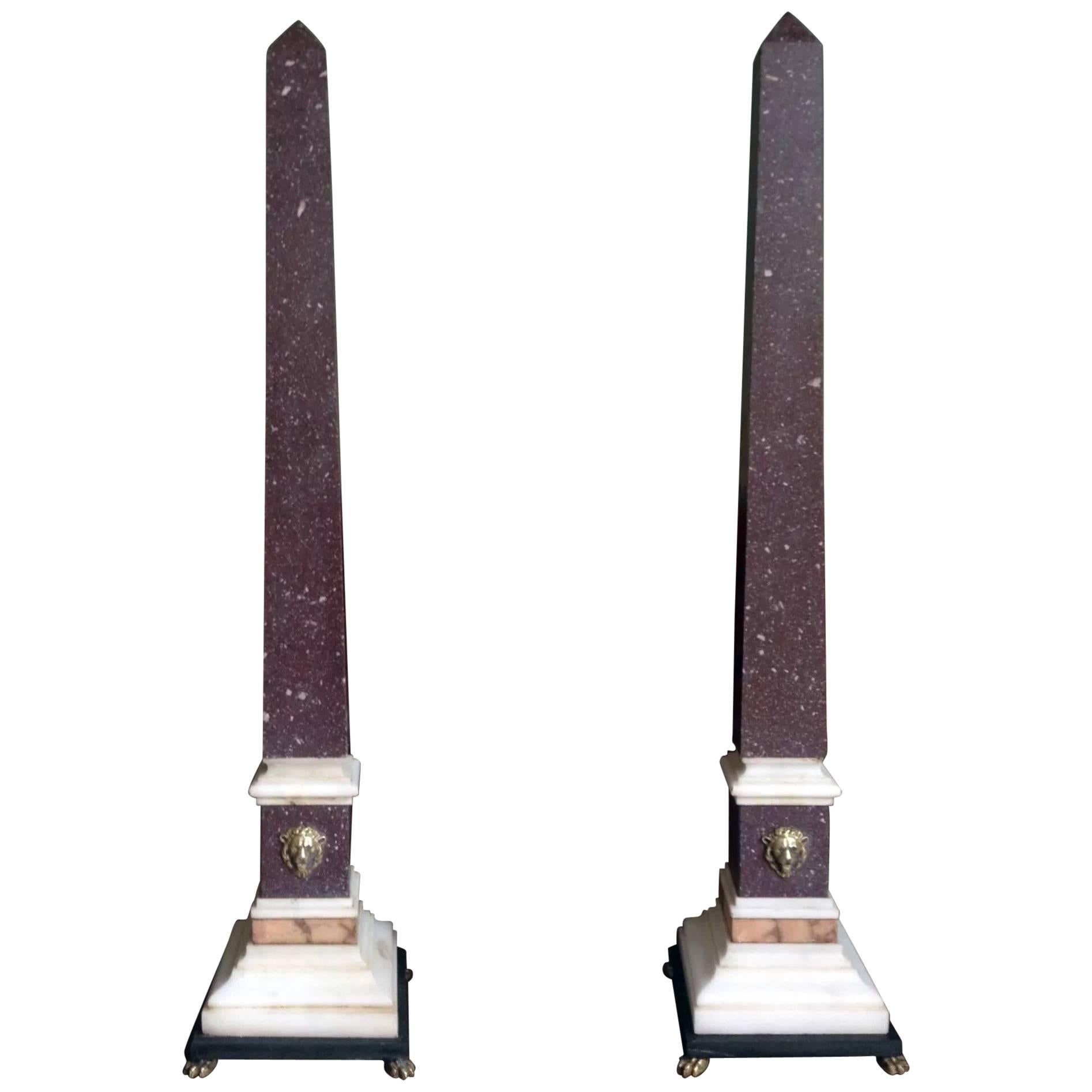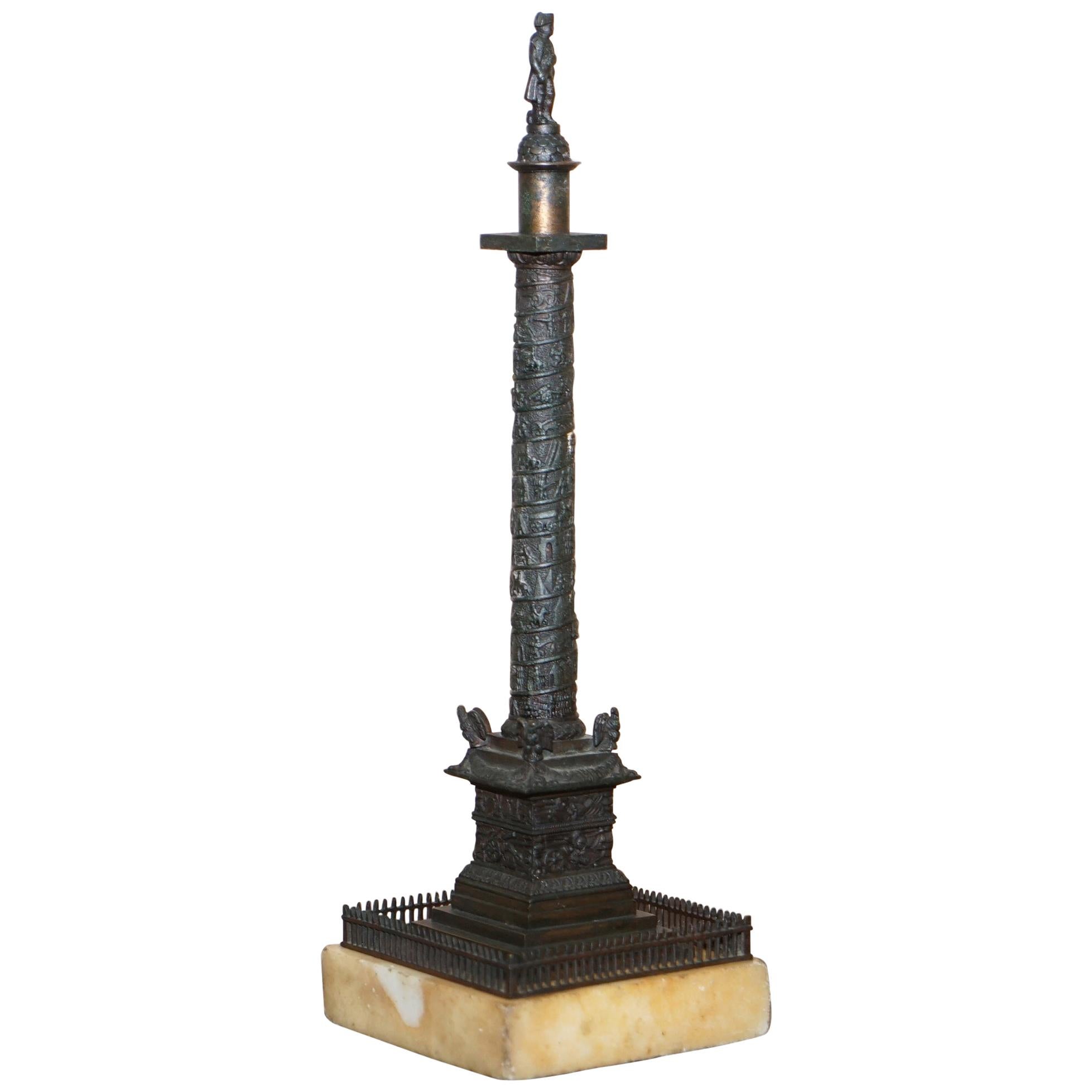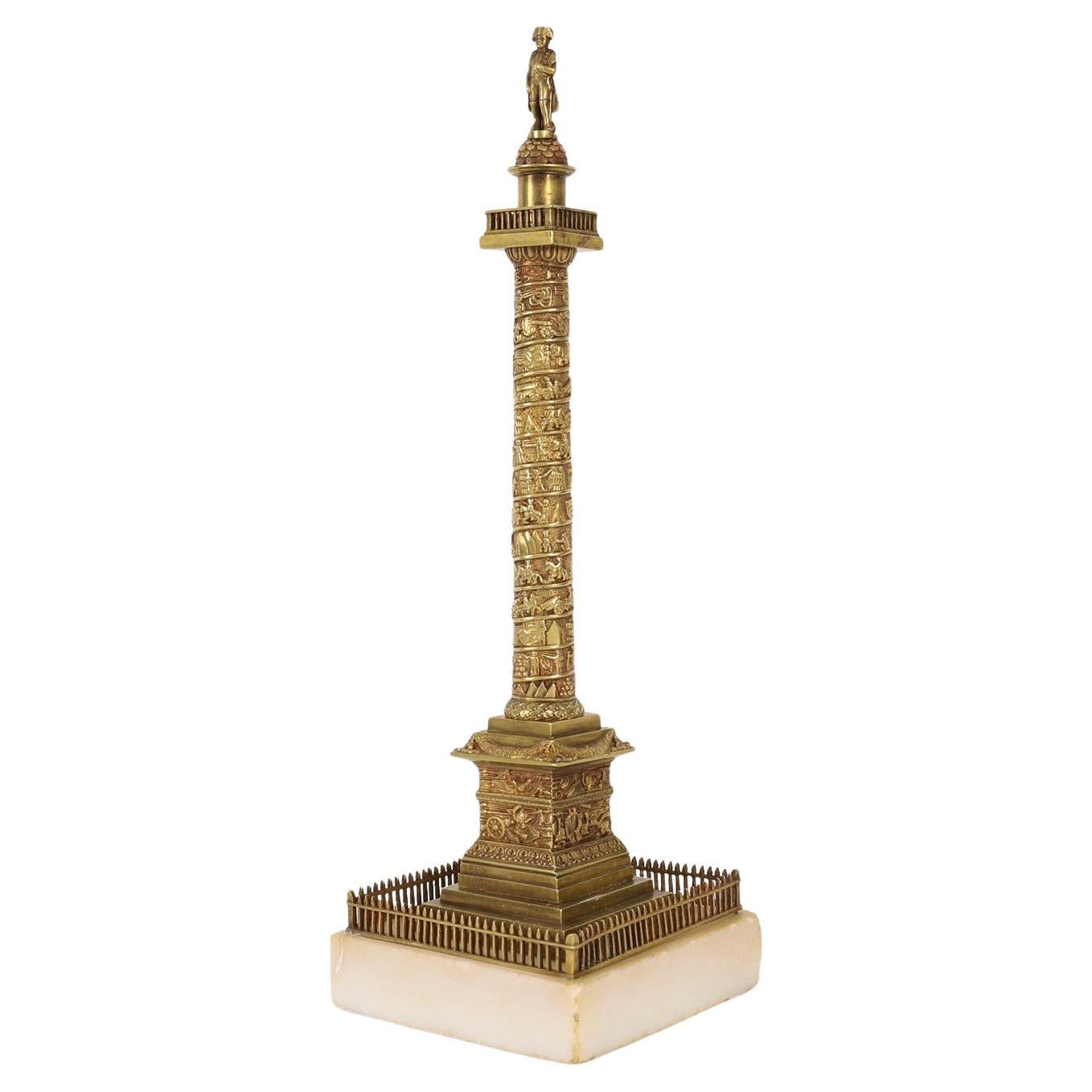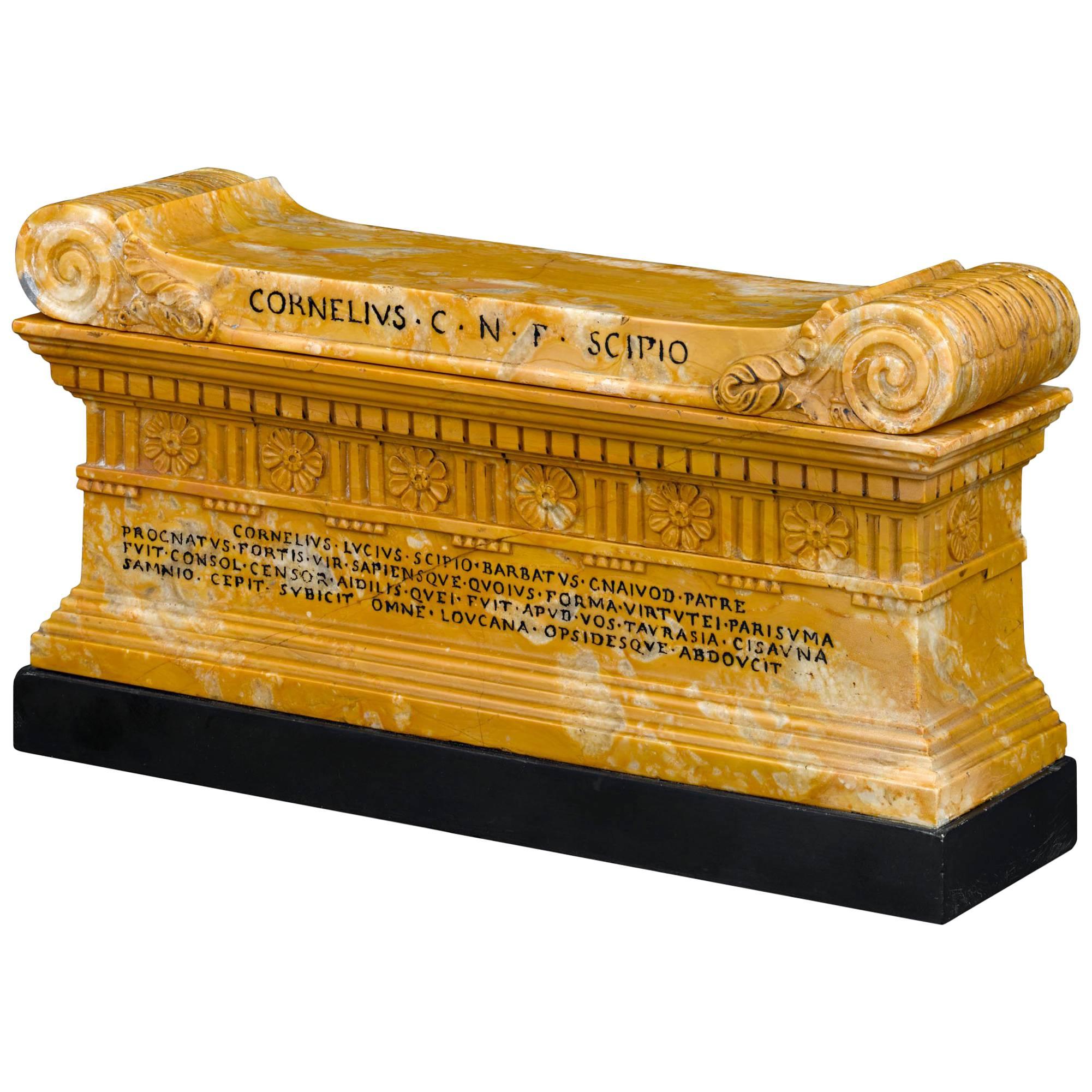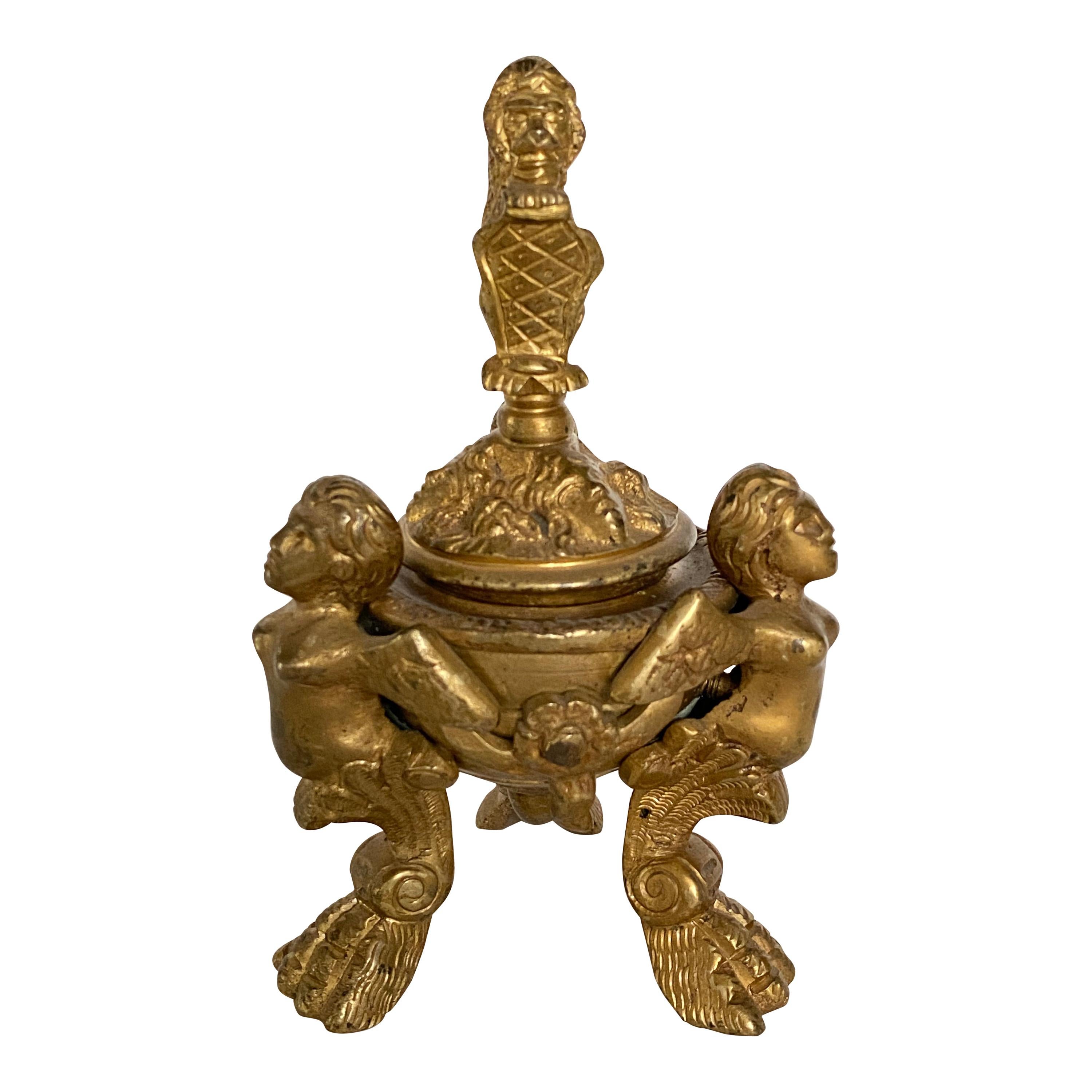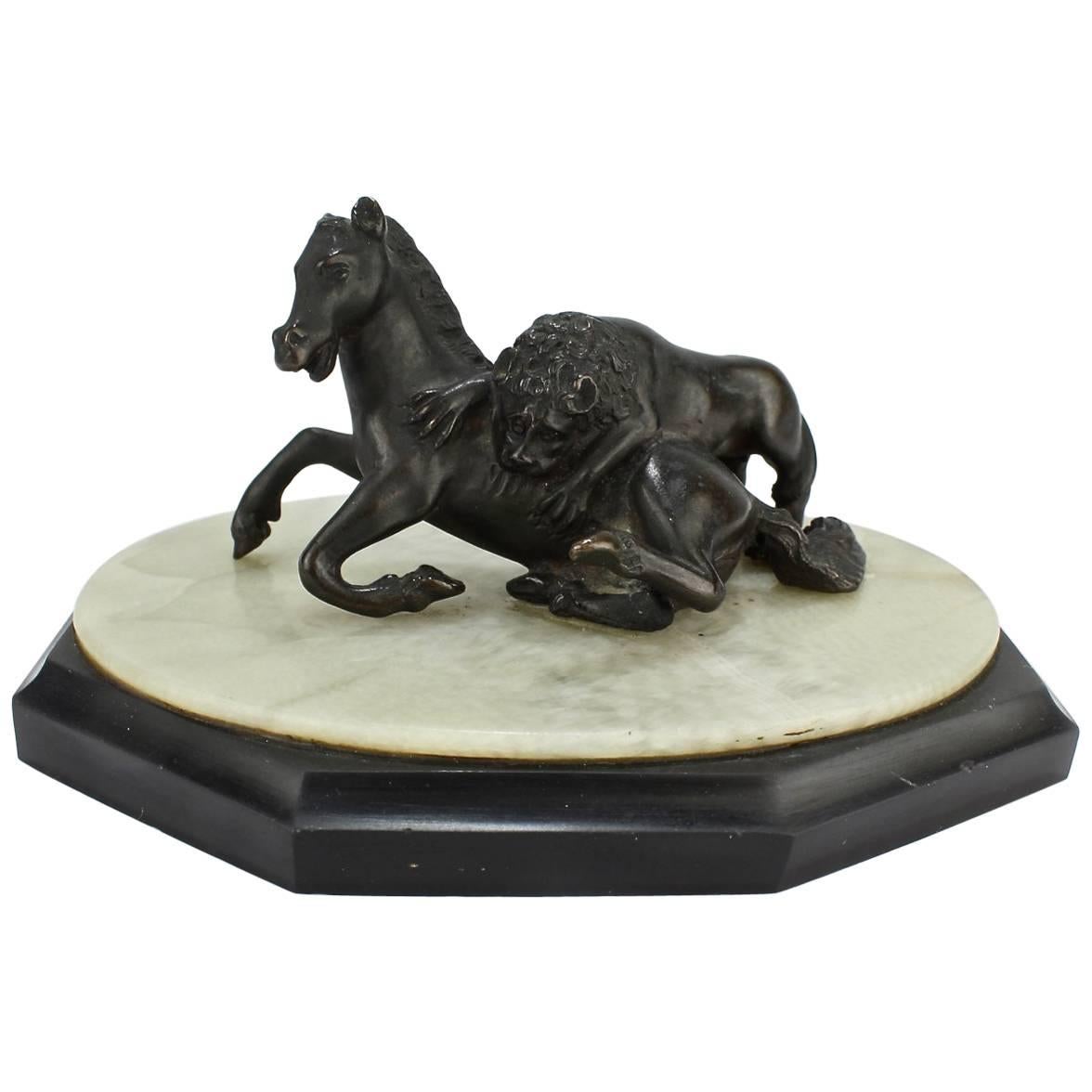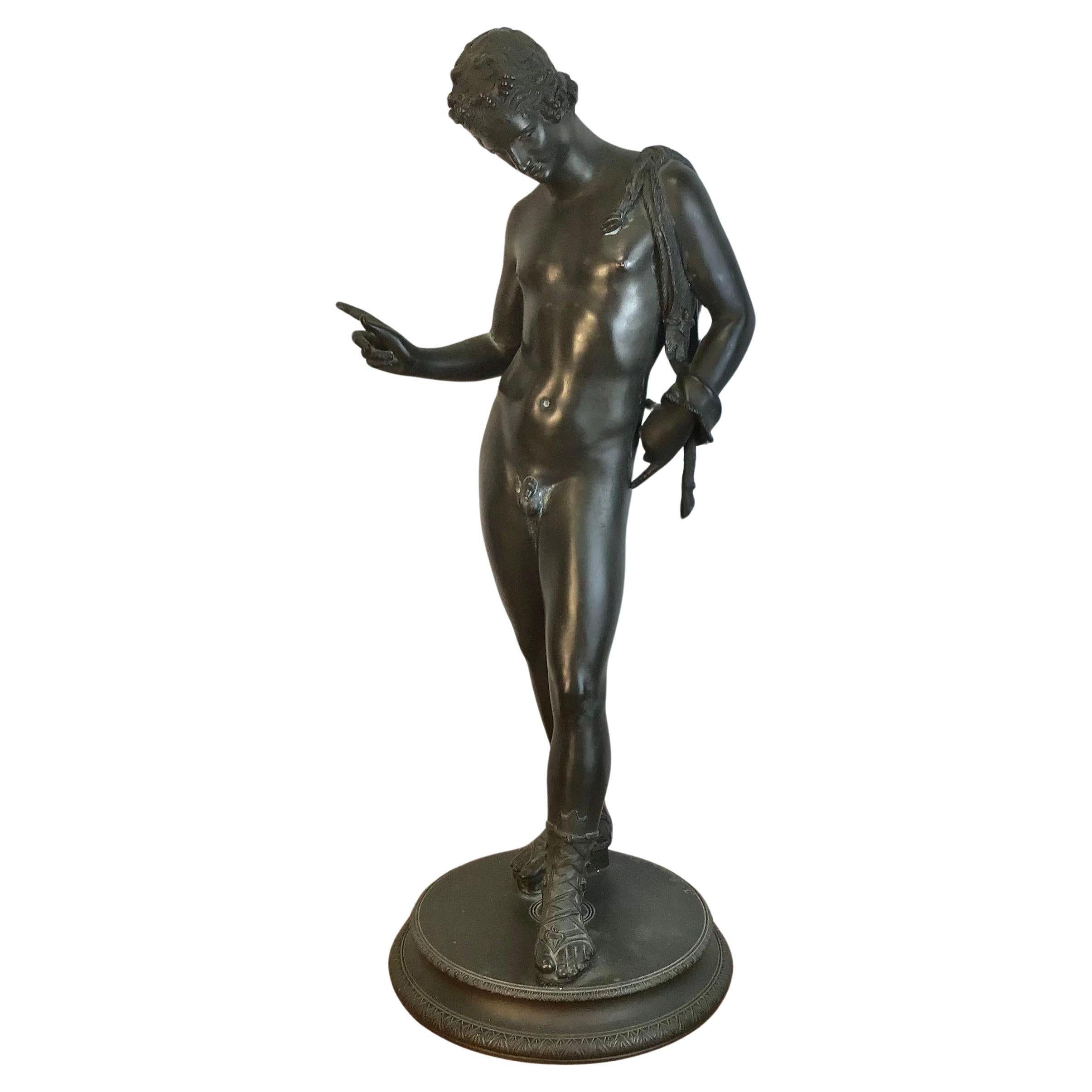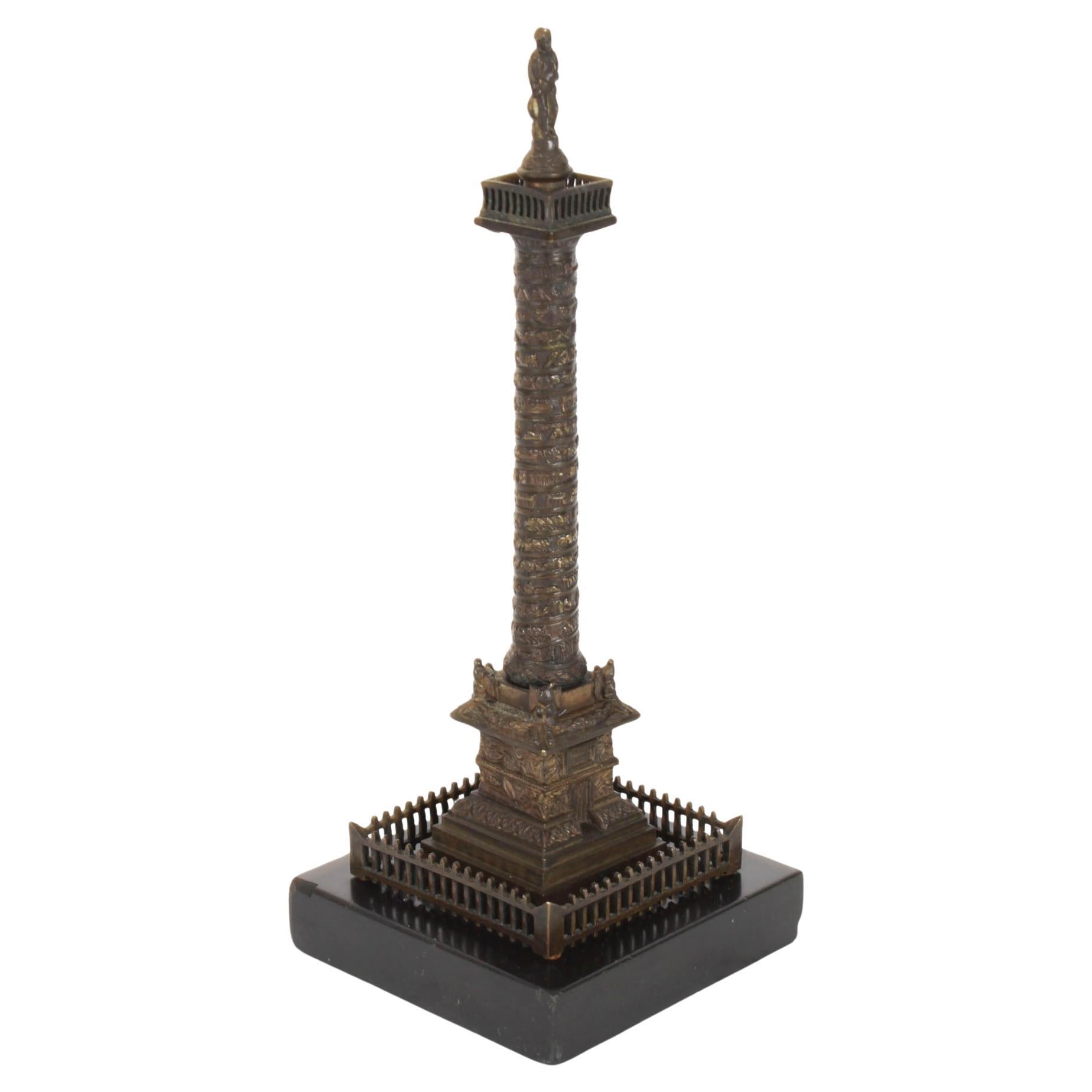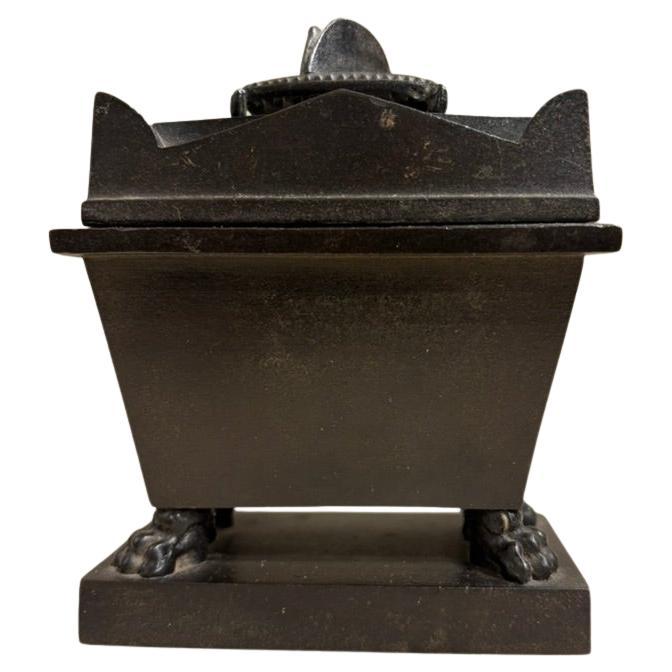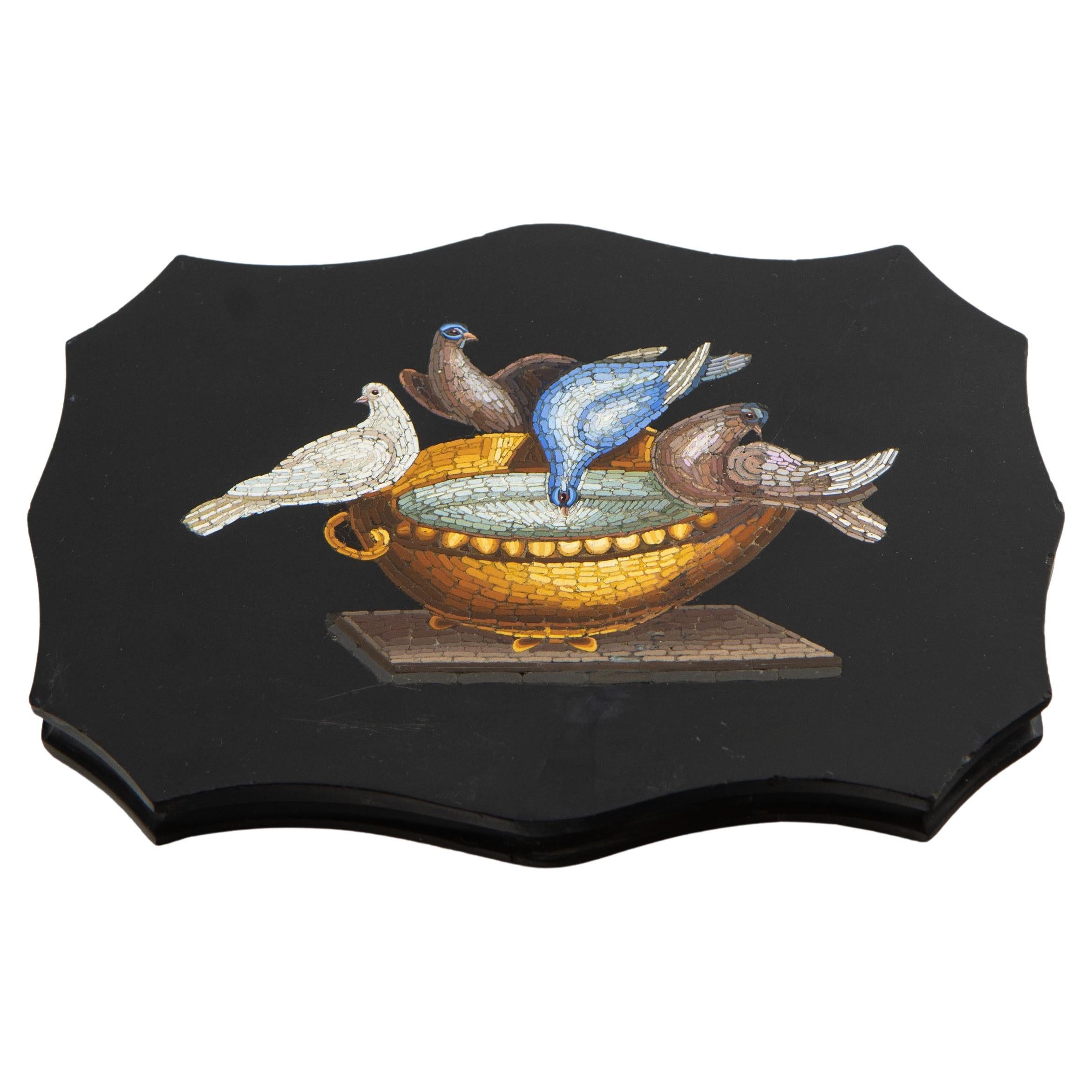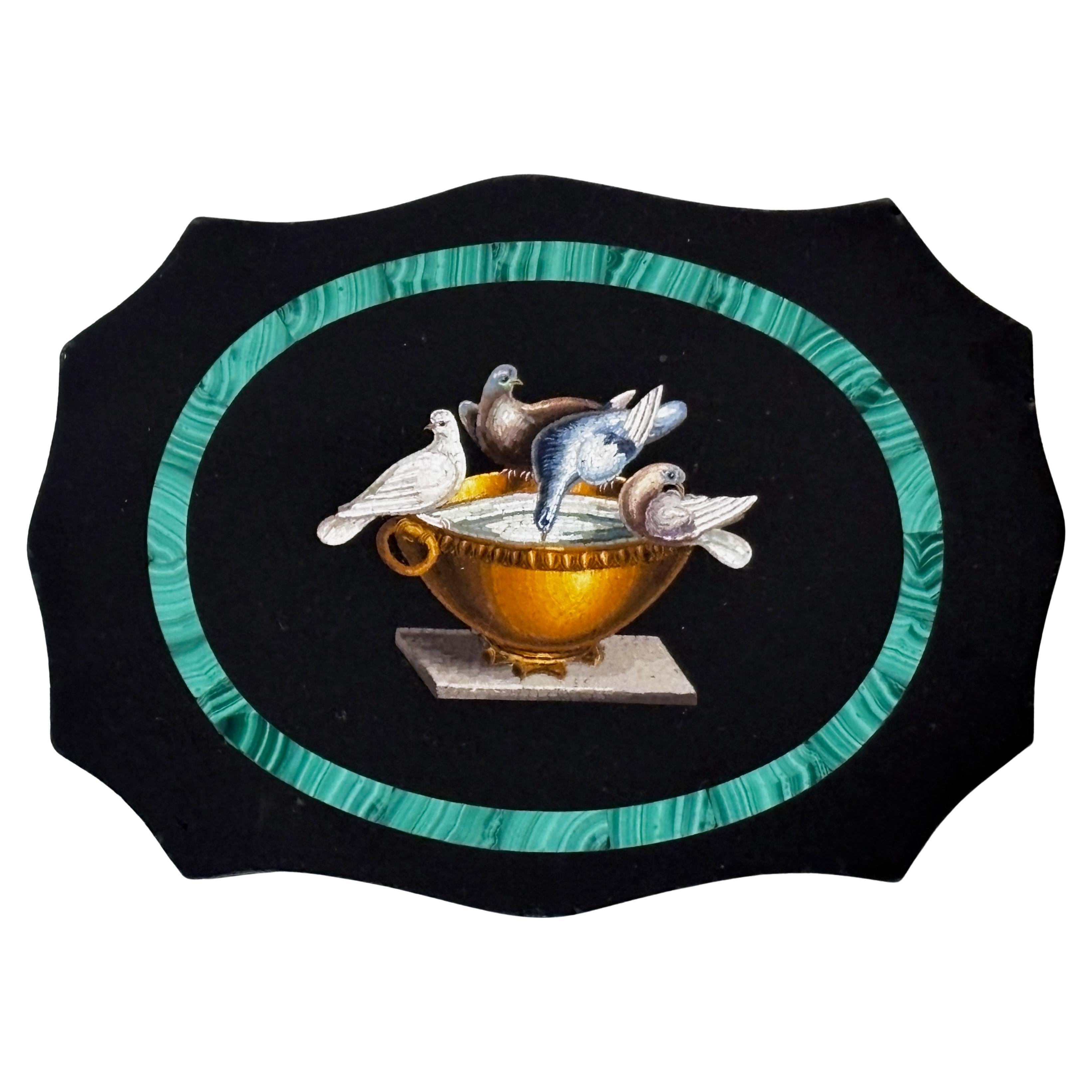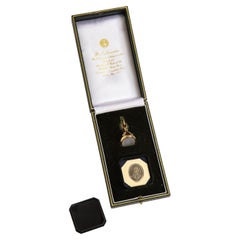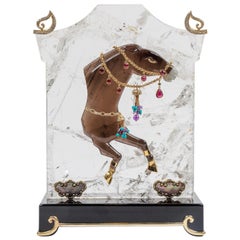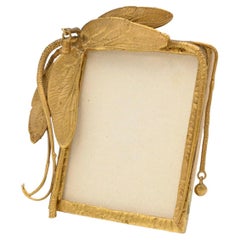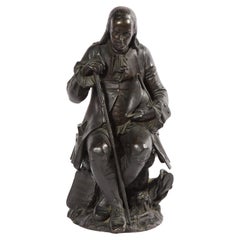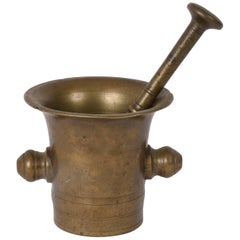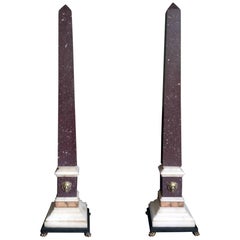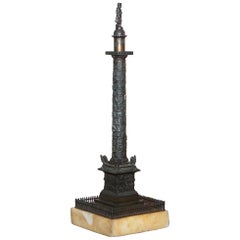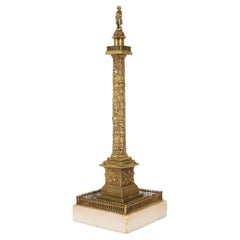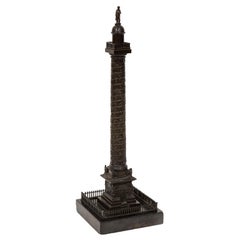
French Grand Tour Bronze Column of the Place Vendome in Paris, 19th Century
View Similar Items
Want more images or videos?
Request additional images or videos from the seller
1 of 19
French Grand Tour Bronze Column of the Place Vendome in Paris, 19th Century
$3,450List Price
About the Item
- Dimensions:Height: 18 in (45.72 cm)Width: 5.5 in (13.97 cm)Depth: 5.5 in (13.97 cm)
- Style:Grand Tour (Of the Period)
- Materials and Techniques:
- Place of Origin:
- Period:
- Date of Manufacture:circa 1860
- Condition:Wear consistent with age and use.
- Seller Location:Queens, NY
- Reference Number:1stDibs: LU1798218019771
About the Seller
5.0
Vetted Professional Seller
Every seller passes strict standards for authenticity and reliability
Established in 1980
1stDibs seller since 2016
63 sales on 1stDibs
Typical response time: 5 hours
Authenticity Guarantee
In the unlikely event there’s an issue with an item’s authenticity, contact us within 1 year for a full refund. DetailsMoney-Back Guarantee
If your item is not as described, is damaged in transit, or does not arrive, contact us within 7 days for a full refund. Details24-Hour Cancellation
You have a 24-hour grace period in which to reconsider your purchase, with no questions asked.Vetted Professional Sellers
Our world-class sellers must adhere to strict standards for service and quality, maintaining the integrity of our listings.Price-Match Guarantee
If you find that a seller listed the same item for a lower price elsewhere, we’ll match it.Trusted Global Delivery
Our best-in-class carrier network provides specialized shipping options worldwide, including custom delivery.More From This Seller
View AllRare American Gold Intaglio Seal of George Washington, Early 19th Century
Located in Queens, NY
A rare American gold mounted intaglio seal of a bust-length portrait of the first President in uniform enclosed by the inscription "George Washington", early 19th century.
In a fitted green leather box retailed by: D.S. Lavender Antiques Ltd., Bond Street, London, England;
Provenance:
D.S. Lavender Antiques Ltd., Bond Street, London, England
Anita and Irvin Schorsch Collection
Exhibited:
Museum of Mourning Art...
Category
Antique 19th Century American American Classical Historical Memorabilia
Materials
Gold
Mellerio Paris, A French Gold, Diamonds, Silver, and Smoky Quartz Carved Horse
By Mellerio
Located in Queens, NY
Mellerio Paris, A French Gold, Diamonds, Silver-Gilt, Rock-Crystal, Jade, Mother-Of-Pearl and Smoky Quartz, Carved Horse Sculpture, Jeweled Mounted Object.
An extremely rare and unique, one of a kind French gold, diamonds, Silver-gilt, rock-crystal, jade, obsidian, mother-of-pearl, and smoky quartz carved jeweled sculpture "CHEVAUX DE LEGENDE", "A Legendary Horse" by Mellerio, Paris, circa 1991.
Sitting on black obsidian base, the solid rock-crystal slab is finely applied with a carved smoky -quartz and jade horse with a harness mounted in 18k gold, brilliant -cut diamonds, rubies, turquoise, and amethyst chains and pendants. The top columns adorned with 18k gold and brilliant cut diamond pendants, the bottom with gold and mother of pearl plaques. The obsidian base with a plaque engraved: CHEVAUX DE LEGENDE" / N° 05 / MELLERIO DITS MELLER / PARIS / 5003 D
The piece is in excellent condition and comes with a custom made wood case made for transport. It's very elegant and has French hallmarks throughout. A truly magnificent piece.
Measures 10.5" high x 8.5" wide x 4" deep
Founded in France in 1613 by the descendants of Italian immigrants from the Vigezzo Valley in the north of Italy, Mellerio is one of the oldest jewellery houses in Europe. The family business soon attracted the attention of the Royal Court and Marie Antoinette herself reportedly purchased a precious bracelet featuring 7 cameos surrounded by rubies in 1780. Later on, in the 19th century, Mellerio became the official supplier of the French Royal family and the Court of Netherland.
Mellerio creates many jewellery items, all set with rare gems such as peridots, amethysts, aquamarines, citrines and topaz, applying for a patent, the flexible stem, a very supple and light jewellery mechanism. Mellerio remains also well known for their spectacular series of Art Nouveau jewels, created at the beginning of the 20th century, as well as for the creation of trophies rewarding some of the greatest footfall and tennis players of history. In 1993, the jewellery house launched their first watch collection.
Today, Mellerio has stores in Paris, Japan and Hong Kong.
July 14, 1789: this date is known throughout the world as the beginning of the French Revolution. According to a ledger belonging to House of Mellerio, this was also the day that the jeweler sold a golden key to the Comte de Coutance for 10 livres. This ledger, as well as inventories dating as far back as 1768, are the jeweler’s oldest archives. These archives have continued to grow over the years, as the House, established on rue de la Paix in Paris, still lives on today, still in the hands of the same family from Craveggia, in the North of Italy.
The tumultuous history of the Mellerio family in France probably goes as far back as the Italian wars of the Renaissance, but the first official document proving their commercial activity in Paris dates back to 1613. This document is the famous royal warrant awarded by Marie de Medici to a number of Italian families established along the rue des Lombards, including the Mellerios, allowing them to sell “small jewelery items”, therefore granting them a small exception to the traditional monopoly enjoyed by Parisian jewelers. At that time, powerful corporations regulated the operations and customs of Parisian business, but thanks to this exceptional warrant, the Mellerios managed to escape the confines of this framework. Today, this wax-sealed document is kept at the city hall of Craveggia.
From 1613 to the Revolution, the Mellerios lived between France and Italy. The corporations tried many times to put an end to their trade privileges, but all in vain, as a dynasty of sovereigns renewed the warrant. Always marrying and often retiring in Craveggia, the Mellerios continued to maintain their jewelry business in Paris. At first, they did this without a shop. Wearing backpacks (wooden boxes divided into small compartments where jewels were kept), they would tour town fairs around Paris and royal castles.
This is how Jean-Baptiste Mellerio (1765-1850) is said to have sold a bracelet set with rubies and Antique cameos to Marie-Antoinette, which still exists today. Many elements seem to prove the veracity of this anecdote. The queen was particularly fond of cameos, which cover the entire background of her famous jewelry cabinet, and ruby was her favorite stone after diamond. The famous bracelet, reacquired a few years ago by the House of Mellerio, is indeed an 18th century jewel, set with antique cameos representing the profiles of Roman emperors. Two branches of the family were operating in Paris during this time, under the reign of Louis XVI: that of Jean-François (1746-1828), the paternal ancestor of the current Mellerios, and that of Jean-Baptiste (1765-1850).
The French Revolution forced them to return to Italy. However, both Jean-Baptiste and François Mellerio (1772-1843), who was the son of Jean-François, were eventually able to return to Paris after the founding of the Consulate. Jean-Baptiste opened a shop at the Iron Crown of rue Vivienne, and François opened his at the Palais des Tuileries, rue du Coq Saint-Honoré. His well-organized order books give an idea of his high-ranking clientele during the “Old Regime”, among which were the Comte and Comtesse Octave de Segur, the Marquise (later Duchess) de Tourzel, former governess of the royal children, and her daughter, the Comtesse de Bearn, the Craufurds -who organized the flight to Varennes, the Duc and Duchess de Gramont, the Comtesse de Boigne, and Madame de Souza, Talleyrand’s mistress.
We also see the names of the imperial family: Empress Josephine, the Queen of Holland, Princess Elisa, Caroline and Pauline. At that time, the House of Mellerio specialized, among other things, in the trade of antique cameos, a newly fashionable genre of jewel that captured the imagination of all the princesses and noble women of the time.
The years of the Restauration and July Monarchy were among the most glorious. The Bourbons were back on the throne, and the clientele of the House of Mellerio had regained its former wealth. Mellerio supplied Louis-Philippe, Duke of Orléans, as well as his mother, wife and sister, with sumptuous jewels, including a set of emeralds made piece by piece, while the Duke of Bourbon, last prince of the House of Condé, offered diamonds to his mistress, the scheming Baronne de Feucheres, and Monsieur de LaFayette also bought cameos for one of his granddaughters. For the first time, Mellerio ventured into the world of arts in 1815, when Carlotta Grisi, a famous dancer who created Giselle, as well as an actress named Rachel, bought jewels at the Mellerio store on rue de la Paix.
1848 marked a new turning point. France once again became a Republic. François Mellerio handed the company over to his son, Jean, and the latter decided to travel to Spain to build a new clientele. He later became one of the jewelers of the royal family, and met Eugénie de Montijo, who remained a faithful client when she became empress of the French people. The Imperial years were lavish. During the Second Empire, Paris was a pageant of crinoline dresses designed by Worth, while jewels by Mellerio, Worth’s neighbour on the rue de la Paix, adorned the noble women of the Tuileries court.
The Empress bought pearls. Mathilde Bonaparte...
Category
20th Century French Mounted Objects
Materials
Rock Crystal, Jade, Quartz, Gold, Silver
Claude Lalanne, a Rare Gilt-Bronze Dragonfly Frame, France, C. 1985
By Claude Lalanne
Located in Queens, NY
Claude Lalanne (1925-2019) A rare gilt-bronze dragonfly frame, France C. 1985,
Signed on reverse Cl. Lalanne Artcurial 25/450.
Measures: 4" high x 3...
Category
20th Century French Art Nouveau Picture Frames
Materials
Bronze
Rare Patinated Bronze Sculpture of Benjamin Franklin, by A. Carrier-Belleuse
By Albert-Ernest Carrier-Belleuse
Located in Queens, NY
Albert-Ernest Carrier-Belleuse (France, 1824-1887)
A rare seated bronze statue of Benjamin Franklin holding his walking stick and hat, with a book in his ri...
Category
Antique 19th Century French American Classical Figurative Sculptures
Materials
Bronze
An Exquisite and Rare French Louis XVI Style Ormolu-Mounted Bloodstone Inkwell
Located in Queens, NY
An Exquisite and Rare French Louis XVI Style Ormolu-Mounted Bloodstone Inkwell, circa 1875.
A truly exceptional and jewel like quality inkwell encrier, made with the finest ormolu, mounted on bloodstone. A true collectors and one of a kind piece.
Revival of the ancient régime in the late 19th century was paramount to the French furniture and bronze casting firms of the Belle Epoque. Imitation in the highest regard and replication of those tastes and styles was prevalent throughout the Paris Faubourg, where the most talented bronziers and ébénistes established their workshops. The present inkwell encrier recalls the late 18th century's obsession with hardstones - a taste expounded above all by the duc d'Aumont and, subsequently Marie-Antoinette. Such hardstone-mounted pieces, reminiscent of Renaissance schatzkammer objects, enjoyed a revived popularity at the end of the 18th century through the impetus of both the marchands-mercier and, more importantly, the hôtel des Menus-Plaisirs, where the duc d'Aumont himself established a workshop in 1770 specializing in the cutting and polishing of precious hardstones.
This exceptional inkwell encrier, sumptuously-mounted with finely chased gilt-bronzes, incorporates a highly-prized material such as bloodstone.
Sometimes called the Sunstone, the meaning of Bloodstone comes entangled in fascinating history. The Ancient Greeks held the Bloodstone as a gem with glorious powers. They referred to it as Heliotrope, which directly translates to Sunstone. It was believed to have heavenly healing powers gifted by the gods and most certainly when it came to healing all things related to the blood. Even as we move forward into the Middle Ages, the Bloodstone takes another mystical story under its wing. It was believed to be formed from Christ's blood. It was said that during the Crucifixion, a few red spots of his blood dripped...
Category
Antique 19th Century French Napoleon III Inkwells
Materials
Bronze, Ormolu
Claude Lalanne (French, 1925-2019) A Rare Pink Silk and Bronze Ginkgo Bag
By Claude Lalanne
Located in Queens, NY
Indulge in the enchanting world of Claude Lalanne with the exquisite Ginkgo Handbag, a wearable masterpiece from Lalanne's iconic Ginkgo collection. Crafted with unparalleled artistr...
Category
20th Century French Collectible Jewelry
Materials
Bronze
$39,200 Sale Price
20% Off
You May Also Like
19th Century Grand Tour Antique Handmade Bronze Mortar with Pestle
Located in Roma, IT
19th-century grand tour antique handmade bronze mortar with pestle. This fantastic piece has an original patina.
The pestle is 9.05 inc high wit...
Category
Antique Mid-19th Century European Grand Tour Scientific Instruments
Materials
Bronze
Pair of Grand Tour Egyptian Porphyry Obelisks, 19th Century
Located in Spencertown, NY
The pair of obelisks with gilt lion faces on front base and gilt lion paws at corners, signed indistinctly. Rome dated 1893.
Category
Antique 1890s Italian Grand Tour Architectural Models
Materials
Porphyry, Bronze
1860 Grand Tour Bronze Statue of Place Vendome Column with Napoleon, Marble Base
Located in West Sussex, Pulborough
We are delighted to offer for auction this stunning antique circa 1860 Grand Tour bronze statue of Place Vendome Column with Napoleon on top in so...
Category
Antique 1860s Italian Grand Tour Mounted Objects
Materials
Bronze
$2,398 Sale Price
30% Off
Antique French Grand Tour Gilt Bronze Model of Vendôme Column 19th Century
Located in London, GB
This is a wonderful antique French Grand Tour gilt bronze model of the Vendôme Column, circa 1880 in date.
This splendid bronze features Napoleon I standing atop in his 'redingote'...
Category
Antique 19th Century French Grand Tour Mounted Objects
Materials
Carrara Marble, Bronze
19th Century Tomb of the Scipios Grand Tour Souvenir
Located in New Orleans, LA
This incredible Grand Tour inkwell relic takes the form of the ancient Tomb of the Scipios, a family of Roman war heroes and generals. Beautifully carved ent...
Category
Antique 19th Century Italian Grand Tour Inkwells
Materials
Siena Marble
19th Century Italian Grand Tour Bronze Inkwell
By Severo Calzetta da Ravenna
Located in Miami Beach, FL
After a 16th century Venetian design, winged putti with taloned legs support a turned bronze inkwell covered with a lid decorated with masks and garla...
Category
Antique 19th Century Italian Renaissance Revival Inkwells
Materials
Bronze
$760 Sale Price
20% Off
Recently Viewed
View AllMore Ways To Browse
Grand Tour Bronze Column
Miniature Cannon
Vendome Marble
Antique Miniature Cannon
Vendome Napoleon
Vendome Column
Miniature Bronze Cannon
Ship Models Miniature
Antique Model Boats
Ship Cabin
Miniature Car
Antique Brass Miniatures
Model Carriage
Vintage Bar Car
Chest Game Antique
Wood Diorama
Model Engine
Used Skylight
